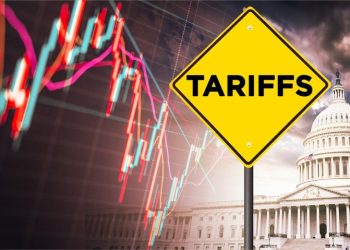Editor’s Note: RISMedia’s Year-End Outlook series provides an in-depth analysis of the housing market’s leading indicators for economic health, and showcases expert insights on what’s to come in 2022.
Dolly Parton might still be plugging away at a nine to five, and BTO might still catch the 8:15 train into the city, but for most of the country, the traditional machinations of labor have changed. Besides the well-documented shifts to remote in many industries, rising wages and a rapidly evolving outlook on what work fundamentally should look like appears to be altering the entire labor economy as people quit their jobs in droves and companies scramble to accommodate new priorities and philosophies.
Many pundits have sought to quickly or succinctly sum up all these changes, or attribute new attitudes to a single event or ideology, but the reality is that the future of labor—both short- and long-term—remains deeply uncertain, and the causes and effects of a shifting labor economy have not been parsed out.
Despite the lack of answers to these fundamental questions, economists and experts that spoke to RISMedia say that there is still plenty that stakeholders—especially in the real estate industry—need to keep an eye on.
Jake Vigdor, an employment and education economist currently working for the University of Washington, says shifts caused by the new labor market are likely to manifest both in philosophical as well as geographic shifts.
“There was this period of time last year when people were saying, ‘San Francisco is going to die,’ or ‘New York City is going to die,’’’ he says. “I don’t think that’s really the case. If you’re thinking about where the transactions are going to be growing over the next year or so, that’s going to be hard to forecast.”
Work-from-home trends and labor shifts have indicated a broad geographic diffusal of population, specifically high-earning and younger families, Vigdor adds. Though it is far too early to say for certain exactly how and to what extent these changes will take hold, likely they will affect more immediate and lasting change than other more widely watched metrics.
In October, unemployment overall fell from 4.8% to 4.6%, and the economy has steadily added more jobs through the last few months. But this progress belies some deeper issues that are not going away anytime soon.
Greg Reed is a labor economist specializing in real estate and urban land at the University of Wisconsin in Madison. He says the big job numbers often touted by media outlets and the federal government are less important than many other underlying factors. Barriers that are preventing people from re-entering the workforce—unaffordable or unavailable child care, wages, health care and discrimination—threaten both short-term recovery and the overall stability of the economy.
“I’m honestly more concerned down the road for those people who are really looking for jobs and really wanted to work and had to work, but because of COVID or for whatever reason—ageism, sexism, you just add what ‘ism’ to it—weren’t able to find jobs during COVID,” Reed says. And they may still need to find something. What’s going to happen to them longer term?”
“There’s some disruption here that’s going to have some structural impact,” he adds.
The sector that most immediately affects real estate, at least right now, is the home construction industry. A new report from the Home Builders Institute (HBI) estimated that the country needs to add 2.2 million more jobs between now and 2024 to keep up with demand, and currently is looking at a deficit of 300,000 to 400,000 laborers.
Ed Brady is the CEO of HBI, and he warns that this worker shortage both preceded and will likely persist past the broader labor crunch.
“I think it‘s been at kind of a crisis level for a while, pre-pandemic and post-pandemic, and even during the pandemic—as you know we remained essential, and so building and developing were still moving forward,” he says. “We’re losing a lot more than we’re bringing in.”
The Next 12 Months
Policy changes are certain to have broad and disparate impacts on the job market. Many companies have yet to set long-term or permanent work-from-home rules, while the federal government has the chance to impact jobs through immigration policy, vaccine mandates or through a stalled federal bill that could begin addressing child care shortages and adding infrastructure- or climate-focused jobs.
Regardless of the progress on these things in Washington, Vigdor says he still sees relative strength in the labor market’s recovery, with expectations that there is no immediate danger of a collapse or recession.
“Our risk of heading into some sort of recession with mass unemployment is pretty low right now,” he says.
But the most optimistic projections, looking at a return to pre-pandemic levels and modes, is much less realistic according to Vigdor, as American workers have indicated they are not willing to accept the old ways of doing things and recovery efforts still have a long way to go.
“The economy over the next year or so—it will be kind of like cleaning up your house after a big party,” he says. “The place is a giant mess, and you look at it and you say, ‘Oh man.’”
“Eventually you’ll get it all cleaned up, but…it could take a year or more,” he adds. “All of this stuff will eventually get worked out, but it’s not going to be quick.”
There are also more fundamental issues, many of which preceded the pandemic, which will hamper a return to goals set by the Fed or other metrics of a healthy economy. These include everything from a lack of child care to health care costs to immigration restrictions.
“We still have a lot of parents who are having trouble getting child care,” Vigdor says. “And another one is immigration…just talking about people who have visas, legal immigrants to the United States—that’s hundreds of thousands of new workers every year in an ordinary year— and that has basically ground to a halt.”
A lack of incoming refugees, who are essential workers in many sectors, Vigdor says, is also styming economic growth and contributing to labor issues. Immigration affects every job sector, he adds, from the highest paying tech jobs all the way down to farm work.
Many problems have also disproportionately affected people of color and women, with unemployment for Black and Hispanic workers staying stagnant in the most recent job report, even as overall unemployment fell.
According to Reed, these issues will specifically dampen the real estate market in ways that go beyond finding construction workers to build houses. Commercial projects will stall if companies cannot find people to clean or maintain the property, appliances for new homes will sit in warehouses with no one to deliver them and apartment complexes will halt expansions if they don’t have staff to serve tenants or provide other on-site services.
“It just seems like it’s permeating a lot, a lot of components of life,” Reed reflects. “It throws the sequencing off on so many different levels. And it just increases the uncertainty, and no one likes uncertainty.”
Vigdor also worries that this labor shortage is unique in that it has affected nearly every region and sector equally—something that is rare historically in the U.S. He also points out that removing supplemental unemployment benefits and returning students to school full time did almost nothing to alleviate the labor shortage, indicating that the shortage is more than just a blip that will resolve itself as the virus fades, and will instead require more investment from companies and policymakers.
Wages, Geography and Education
To address a lack of carpenters, contractors, foremen, plumbers and electricians who build and rehab the homes necessary to keep the real estate industry growing, the answer must start with education, according to Brady.
“Investing in schools, investing in pre-apprenticeship education…is one step. The country has to invest in that,” he says. “We can immediately change the dialogue in the secondary schools that you’re not ‘alternative’ if you’re going into the trades. It’s a first path, it’s not an alternative path, and we need to change that perception.”
Trade jobs are especially hard to fill quickly, Brady argues, because experience is so important. A carpenter fresh out of school might take twice or three times as long to put up a house as one with 15 years of experience.
Even if the country begins bringing in enough materials at cheap enough prices to begin alleviating the pressure of housing shortages, Brady claims the market will still be bottlenecked without enough skilled labor.
“Productivity, I contend, as long as we’re not investing in younger people…I think it’s going to get worse before it gets better. That’s why we have to invest in it now for the future,” he says.
The recent HBI report found that about half of construction workers in the trades make more than the median annual income in the country. But likely the industry will need to continue raising wages to attract more workers, according to Vigdor, as workers have more choices and negotiating power in their jobs than any time in recent memory.
“Finding the carpentry crews and the masonry crews…if you’re having a tougher time finding that workforce, it’s going to lead to a slow down in new inventory,” he says.
Reed says that every industry right now needs to understand that businesses will have to invest more in paying their workers if they want to compete—or even stay open.
“There needs to be a wake-up call that in order to not only attract, but also retain that talent, they’re going to have to pay more,” he says.
On the positive side for real estate, an increase in wages for lower-paying jobs could elevate some number of families, from renters just scraping by to prospective homebuyers. Federal programs offering down payment assistance and increasing affordability in housing could bolster that trend, according to Vigdor.
“Some of these traditionally lower-incomes households, they’re getting bigger and steadier paychecks. That could lead to a situation where your markets for things like starter homes…there could be some renewed interest there,” he says.
This scenario depends on how inflation continues—if wages and incomes can keep up with that metric—and also if the current levels of growth will continue long term (Reed says he believes they will).
“I think the marketplace is speaking loud and clear, and I don’t see wages flipping notably from the higher levels they are now meeting,” Reed contends. “I can’t tell you the number of people who have said, ‘Why would I take a job at $10 an hour?’”
A trend like this could create a relative explosion of buyers in the starter home price range, especially in marginal markets, Vigdor predicts. While coastal and expensive suburban areas would not see much change, various semi-rural areas outside bigger metros, and smaller cities spread across the Midwest and South, could quickly heat up in terms of real estate.
At the same time, an entirely separate trend could also vastly alter the geography of work—and real estate. Big tech companies are currently diffusing their physical presence broadly across the country to match workers’ preferences, Vigdor says, which was something that started well before the pandemic. Distributing your workforce and offices as a tech company actually makes more sense than having huge central space-age complexes, he posits, and many companies had already begun spreading out before the pandemic.
If Amazon, Facebook or Google end up bringing most workers back in person, Vigdor says the likely path will not be a return to the original offices but rather an expansion of satellite locations to dozens of places beyond large headquarters in Silicon Valley, New York or Austin, allowing people to live in disparate locations while still having a physical office somewhat accessible if need be.
“It’s not going to be the thing that brings Gary, Indiana back or anything like that,” he cautions. “These relocations are people moving from really expensive places, to other somewhat cheaper but still desirable locations. So that’s going to affect the real estate markets.”
These cities could be places in the Midwest or Sun Belt that have already seen tremendous growth during the pandemic, or they could affect areas that have yet to see that kind of attention, Vigdor says.
This “decentralizing” is specifically unpredictable and will depend on the kind of amenities workers value, and where companies can find favorable conditions as far as taxes and other preferences. Other factors, like cities that have universities focused on specific cutting-edge research like robotics or AI will also draw some of these companies, Vigdor says.
“The stuff is happening, and it’s been happening for quite some time. That will be an interesting thing to see,” he says.
Again, what exactly the ramifications of these individual trends might be remains hard to predict. All of them have the potential to snowball and cause a domino effect that begins to alter behaviors in various other silos or sectors. But as labor appears to be evolving on a fundamental level post-pandemic, there is a distinct likelihood that the next several months will see some transformational changes in work.
“Wall Street loves to see regular, consistent numbers on jobs reports,” Reed says. “I’m a little more concerned about those longer-term implications.”
 Jesse Williams is RISMedia’s associate online editor. Email him your real estate news ideas to jwilliams@rismedia.com.
Jesse Williams is RISMedia’s associate online editor. Email him your real estate news ideas to jwilliams@rismedia.com.












